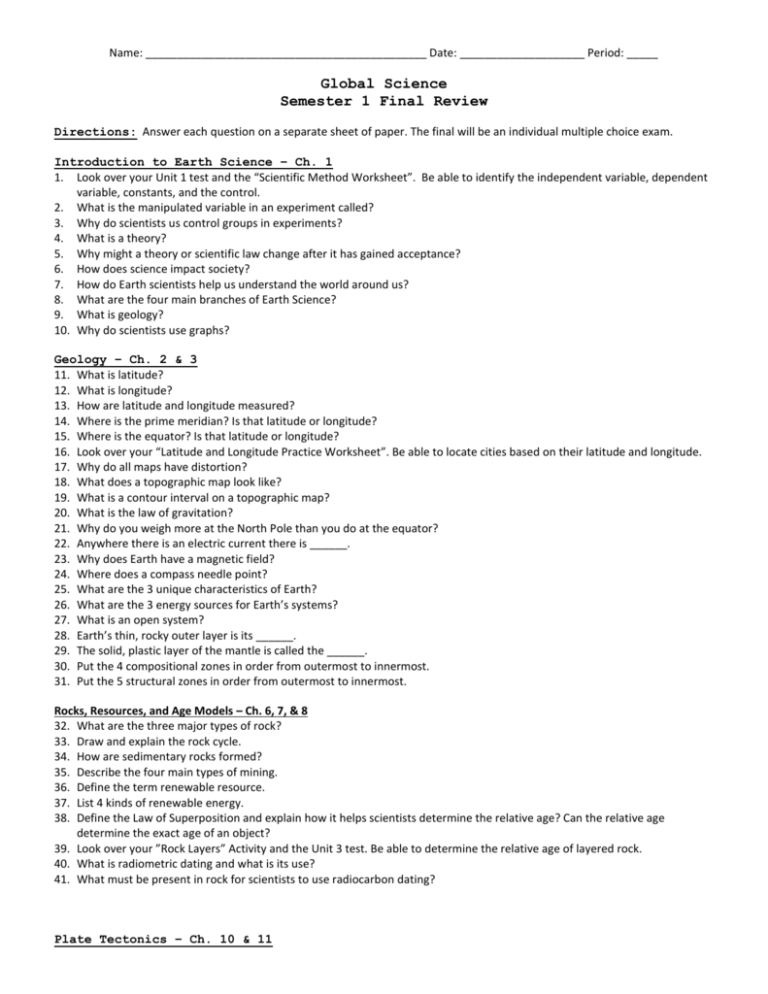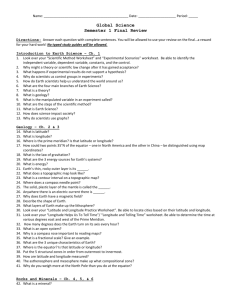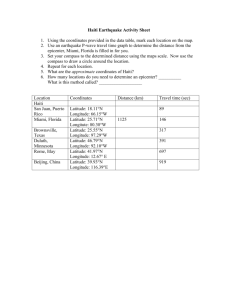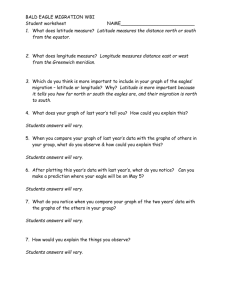Name: Date: Period: _____ Global Science Semester 1 Final
advertisement

Name: _____________________________________________ Date: ____________________ Period: _____ Global Science Semester 1 Final Review Directions: Answer each question on a separate sheet of paper. The final will be an individual multiple choice exam. Introduction to Earth Science – Ch. 1 1. Look over your Unit 1 test and the “Scientific Method Worksheet”. Be able to identify the independent variable, dependent variable, constants, and the control. 2. What is the manipulated variable in an experiment called? 3. Why do scientists us control groups in experiments? 4. What is a theory? 5. Why might a theory or scientific law change after it has gained acceptance? 6. How does science impact society? 7. How do Earth scientists help us understand the world around us? 8. What are the four main branches of Earth Science? 9. What is geology? 10. Why do scientists use graphs? Geology – Ch. 2 & 3 11. What is latitude? 12. What is longitude? 13. How are latitude and longitude measured? 14. Where is the prime meridian? Is that latitude or longitude? 15. Where is the equator? Is that latitude or longitude? 16. Look over your “Latitude and Longitude Practice Worksheet”. Be able to locate cities based on their latitude and longitude. 17. Why do all maps have distortion? 18. What does a topographic map look like? 19. What is a contour interval on a topographic map? 20. What is the law of gravitation? 21. Why do you weigh more at the North Pole than you do at the equator? 22. Anywhere there is an electric current there is ______. 23. Why does Earth have a magnetic field? 24. Where does a compass needle point? 25. What are the 3 unique characteristics of Earth? 26. What are the 3 energy sources for Earth’s systems? 27. What is an open system? 28. Earth’s thin, rocky outer layer is its ______. 29. The solid, plastic layer of the mantle is called the ______. 30. Put the 4 compositional zones in order from outermost to innermost. 31. Put the 5 structural zones in order from outermost to innermost. Rocks, Resources, and Age Models – Ch. 6, 7, & 8 32. What are the three major types of rock? 33. Draw and explain the rock cycle. 34. How are sedimentary rocks formed? 35. Describe the four main types of mining. 36. Define the term renewable resource. 37. List 4 kinds of renewable energy. 38. Define the Law of Superposition and explain how it helps scientists determine the relative age? Can the relative age determine the exact age of an object? 39. Look over your ”Rock Layers” Activity and the Unit 3 test. Be able to determine the relative age of layered rock. 40. What is radiometric dating and what is its use? 41. What must be present in rock for scientists to use radiocarbon dating? Plate Tectonics – Ch. 10 & 11 42. 43. 44. 45. 46. 47. 48. 49. 50. 51. 52. 53. 54. 55. 56. 57. What 4 pieces of evidence to Wegner use to support his hypothesis? What was Alfred Wegner’s hypothesis called? What is sea-floor spreading? Why was sea-floor spreading an important discovery? What is a transform boundary? What causes a supercontinent to break apart? What are tectonic plates? Deep-ocean trenches commonly form at what type of boundary? What is subduction? What is stress? What happens when two oceanic plates collide? What happens when continental plates collide? How are faults different than folds? What is isostasy? What is compression? What are the 4 types of mountains? Earthquakes and Volcanoes – Ch. 12 & 13 58. Is earthquake prediction reliable? 59. What are seismic waves? 60. Why do earthquakes usually occur at plate boundaries? 61. What is elastic rebound? 62. Which magnitude scale do scientists prefer to use? 63. What is the epicenter of an earthquake? 64. What is a foreshock? 65. What type of waves are the slowest moving, but potentially the most harmful? 66. How is lag time and distance to an epicenter related? 67. How do scientists find the distance to an epicenter? 68. What happens to a rock when its temperature rises above its melting point? 69. What is a hot spot? 70. What is volcanism? 71. What is a tsunami? 72. Earthquakes that do the most damage usually have a(n) ________ focus? 73. What things might signal the eruption of a volcano? 74. What happens if a fault is locked? 75. What are the 3 types of volcanic cones? 76. Where are volcanoes formed? (3 places) 77. What type of lava causes a quiet eruption? 78. What type of lava causes an explosive eruption? 79. Why does magma rise? 80. What happens when an oceanic and continental plate collide?








